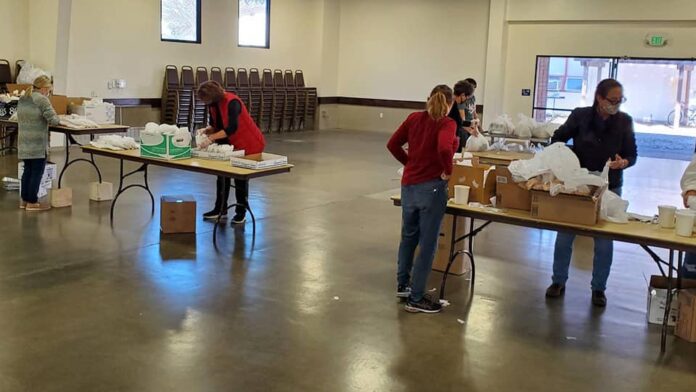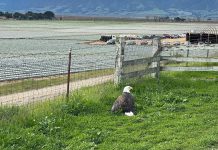
KING CITY — Monterey County Agricultural and Rural Life Museum hosted its 26th Annual Drury Tankersley Clam Chowder Dinner this year with a pandemic adjustment on Jan. 29 at the Salinas Valley Fairgrounds in King City.
Jessica Potts, MCARLM’s executive director, noted the clam chowder dinner has become an annual social event.
“People gather for a good meal and cause, and stay talking to friends that they may not see every day,” Potts said. “This year, due to the Covid-19 pandemic, this event, like all others of its kind, has had to be reimagined.”
This year’s dinner was in a drive-thru format, where attendees picked up their meal in their vehicles with minimal contact.
“The kitchen crew have been a steady and important reason that the event has continued to be an annual success,” Potts said. “The Vanoli and Tankersley families are the holder of the Lloyd Atwater Clam Chowder recipe that is at the center of this event, and continue to work hard to provide the soup annually in honor of the late Drury Tankersley.”
This year continued the tradition of the Vanoli and Tankersley families hard at work in the kitchen to ensure the same quality soup was provided, though in a new pickup format.
The dinner is typically a large event with more than 100 volunteers from various groups assisting with operations, including seating and serving.
“In consideration of the current times, we will find out what we can do with a small group of volunteers,” Potts said. “We will have to limit our help to the family groups for the kitchen, and the MCARLM Board to fill in the prep and facilitation of handing out the dinner packs.”
The result is a volunteer staff of less than a couple dozen in order to adhere to pandemic safety guidelines.
“Without the sit-down element of the event, there will be a far less need for manpower this year,” Potts said of the adjustments.
Funds from the clam chowder dinner keep the museum functioning.
“With seven museum buildings, all telling a unique, yet important story, this event helps to keep staffing to care for the artifacts within and to continue to work to tell the stories of our area’s rich heritage,” Potts said. “The Salinas Valley is full of culture and legacies that tie people of all ages to the land, area and each other. Having a vital and relevant source to protect and educate the youth, community and visitors, like the museum, helps to provide a sense of community and relevancy in the stories around us.”
The presence of the museum, Potts noted, provides a place to celebrate the collective heritage of the region, which ties residents of all ages together.














